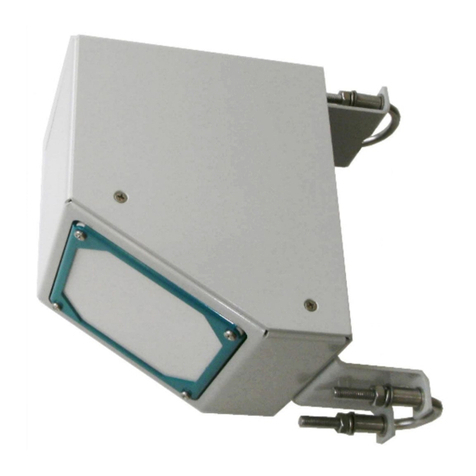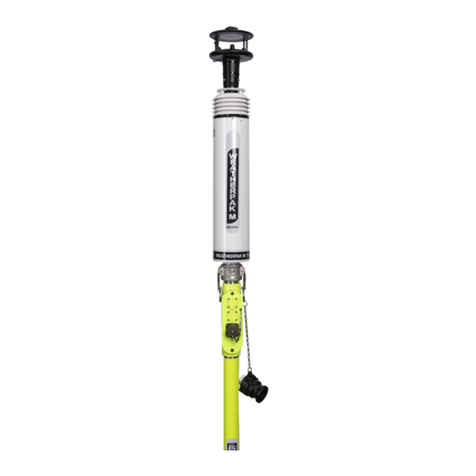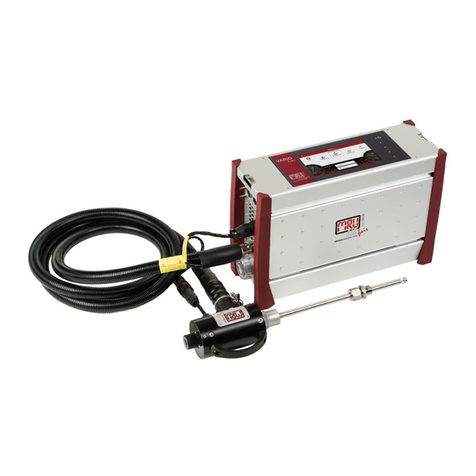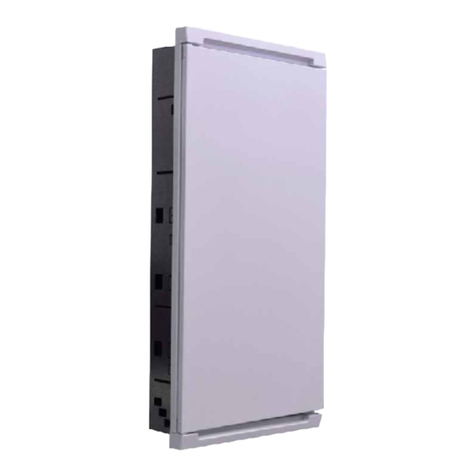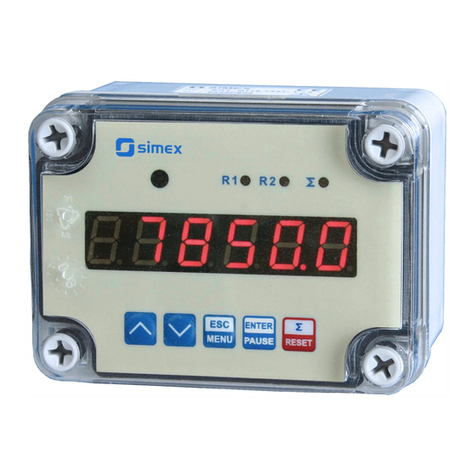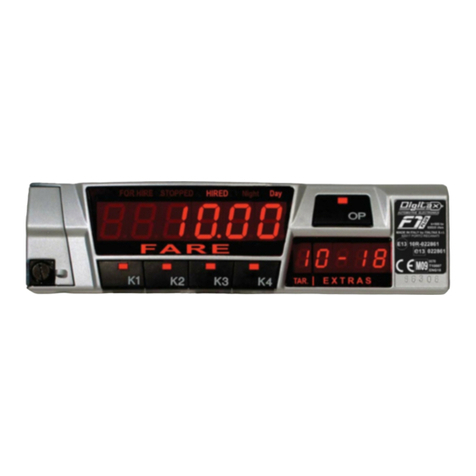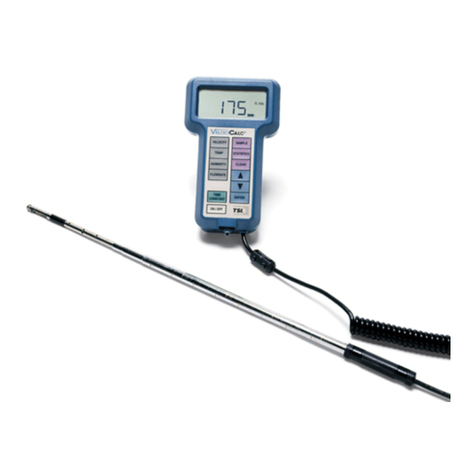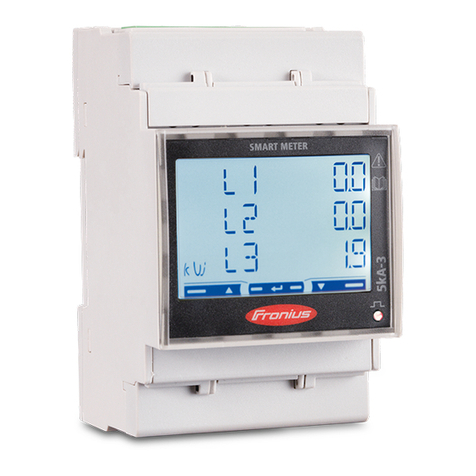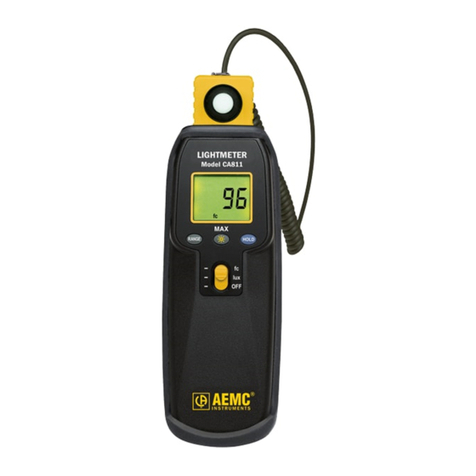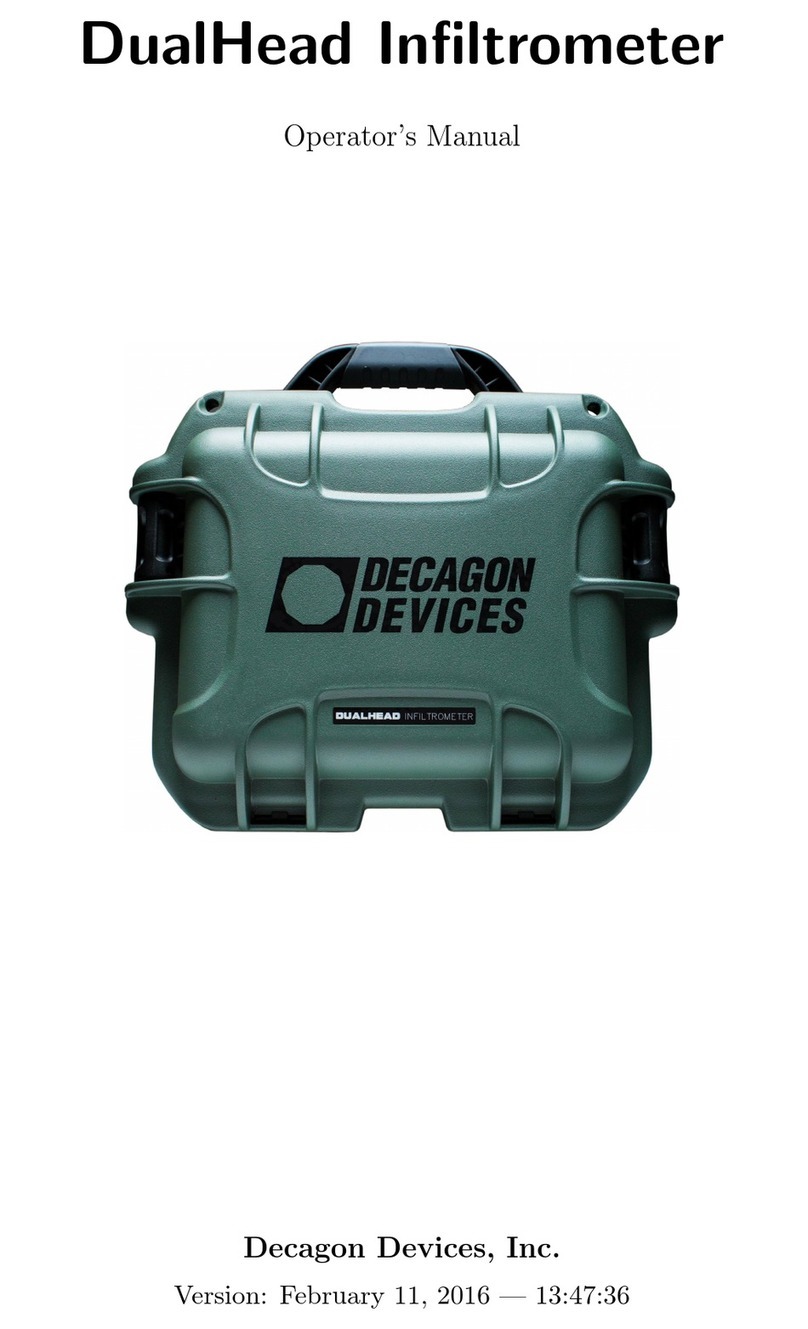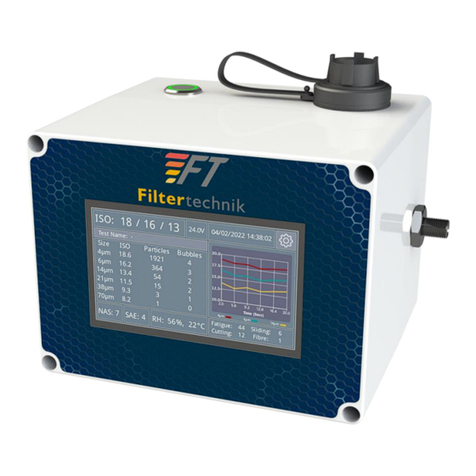Etari ET-111 User manual

2 IN 1 COATING THICKNESS GAUGE
OPERATING INSTRUCTIONS
MODEL: ET-111
www.etari.de

When the UV LED function is turned on, it will radiate intense UV light
during operation. Since UV light can be harmful to eyes, do NOT look
directly into the UV light, even through an optical instrument. In case of
the light reection, UV protective glasses are required to use in order to
avoid damage by the light.
CAUTION
* Do not use the unit near any device which
generates strong electromagnetic radiation or
near a static electrical charge, as these may
cause errors.
* Do not use the unit where it may be exposed
to corrosive or explosive gases. The unit may be
damaged, or explosion may occur.
* Do not keep or use this unit in an environment
where it will be directly illuminated by sunshine,
or where it condensation. If you do, it may be deformed, its insulation may
be damaged, or it may no longer function according to specication.
* Do not place the meter on or around hot objects (70°C/158°F). It may
cause damage to the case.
* If the meter is exposed to signicant changes in ambient temperature,
allow 30 minutes for temperature stabilization, before taking measurement.
DANGER
INTRODUCTION
This instrument is a 4 digit, portable, easy to use and compact-sized digital
“ferrous” or “non-ferrous” coating designed for simply one hand
operation. Meter comes with backlight LCD display and Auto Power O (60
seconds approx.) to extend battery life.
SAFETY INFORMATION
It is recommended that you read the safety and operation instructions
before using the coating thickness gauge.

* Condensation may form on the sensor when
going from a cold to hot environment. Wait for 10
minutes for condensation to dissipate before
taking measurements.
*This unit is not constructed to be waterproof and
dustproof. Do not use it in a wet or very dusty
environment.
*In order to take accurate measurement, make
sure the sensing tip contacts the coated surface
tightly without tilting.
* Please make sure there is no air bubbles between
substrate and coating.
*Substrate Zeroing Calibration: Must be implemented for each
use.
*Two point calibration:Must implement for frequent testing points to
increase measuring accuracy.
*The enclosed zeroing plates are only suitable for the use of calibration of
coating thickness meter itself. Apart from that, the meter should be
performed two point calibrationmethods to get accurate readings before
use.
The zeroing on specic material substrate still needs to be done before
taking formal measurements, such as Iron, Steel, Bronze, Copper, Nickel,
Zinc, and SUS304 and so on, which is to avoid the measuring errors that
cause by the dierence of individual substrates.The end users can get
much more accurate measuring readings on the specic metal under test
by doing two calibration methods.
WARNING
ELECTROMAGNETIC FIELD INTERFERENCE
This instrument uses magnetic eld method to measure the coating
thickness on ferrous metal base. If this meter was placed in the
environment with 20mG (mini Gauss) or above, the accuracy would be
aected. Suggest that the meter should to put far away from the interfered
source at least 30cm.

Electromagnetic eld strength:(unit = mini Gauss)
Any product with coil inside should be considered.
Electromagnetic Source 0 cm 30 cm
Cellular Phone Charger 50 ~ 500 < 1
Notebook Power Supply 100 ~ 1000 < 5
LCD Display 10 ~ 100 < 1
Fan 100 ~ 1000 < 5
Reading Lamp 400 ~ 4000 < 10
Recommended operating conditions ( >30cm)
Abnormal operating conditions (<30cm )

Operating Environment: -13°F to 122°F (-25°C to 50°C) at < 75% R.H.
Storage Temperature: -13°F to 140°F (-25°C to 60°C), 0 to 80% R.H. with
battery removed from meter.
Temperature Coecient: 0.1x (specied accuracy) / °C (< 18°C or >28°C)
Auto Power O: 1 minute.
Standby Consuming Current:< 6µ A
Battery: 1.5V (AAA size) x 2pcs.
Battery Life: 17 hours (continuity) typical with alkaline battery.
Low Battery Indication: The“ ”is displayed when the battery
voltage drops below the operating level.
Dimensions: 120mm (H) x 40.4mm(W) x 29.2mm(D).
Weight: Approx. 100g (including battery).
SPECIFICATION
ELECTRICAL
Detectable Substrate Material:Ferrous metal (iron, steel) and
Non-Ferrous metal (copper, aluminum, zinc, bronze,brass, etc.)
Ferrous Thickness Range: 0 to 80.0mils, 0 to 2000µm.
Non-Ferrous Thickness Range: 0 to 40.0mils,0 to 1000µm.
Display Resolution: 0.1mils/1µm.
Ferrous Accuracy: ±4dgts on 0 to 7.8mils.
±(3%+4dgts) on 7.9mils to 80.0mils.
±10dgts on 0 to 199µm.
±(3%+10dgts) on 200µm to 1999µm.
Non-Ferrous Accuracy: ±4dgts on 0 to 7.8mils.
±(3%+4dgts) on 7.9mils to 40mils.
±10dgts on 0 to 199µm.
±(3%+10dgts) on 200µm to 1000µm.
Response Time: 1 second.
GENERAL

Sensing Tip
LightingUV-Lighting
DEFINITION
Peel o the protection lms from foil before rst use.
Zeroing Plate
Ferrous is steel
plate
Non-ferrous is
Aluminum plate
Standard Coating Plate
Peel o the both
sedi of protection
lm before use
Power on and o:
1. Keep the sensing tip of the meter away from any substrate or any
magnetic eld.
2. The Gauge automatically powers up and Measuring when probe is pressed.
3. Auto Power O (APO):
Leave the gauge without operation for 1 minute, power turns o
automatically.
Measuring:
1. Press the sensing tip of the gauge to contact coated surface tightly. Wait
for the reading to appear and measurement is completed. (One sound“Beep”
announced)
2. If the coating thickness is out of range, the meter shows "----".
INSTRUCTION
LCD Function Key
Sensing Tip

Attention!
The calibration and resetting to factory settings is only possible in
automatic mode A.
* During calibration, Auto Power O function will be inactivated. If the
LCD display "----", it can not zero the substrate, one point calibration or
two-point calibration.
* When it is calibrated by user, its max calibrated value is
43.3 mils /1100µm.
Substrate Zeroing Calibration:
Press the sensing tip of the probe to contact uncoated surface tightly. Wait
for the reading to appear and measurement is completed (one“Beep”
sound announced), then you can move the Gauge away. Press“0”button
(no longer than 2 seconds) to calibrate substrate material or foil.
LCD displays 0 μm.
One Point Calibration:
1. Press the sensing tip of the probe to contact coated
surface tightly.Wait for the reading to appear and measurement is
completed (one“Beep”sound announced), then you can move the Gauge
away.
2. Press “CAL” button over 3 sec into calibration mode. LCD will blink “CAL”
icon.
3. In calibration mode, use
▲
or
▼
button to adjust
readings until it matches the known standard’s thickness (4.0 mils /
102µm).
4. Press “CAL” button to exit one point calibration and return to measuring
mode“CAL”o.
CALIBRATION

FUNCTION KEY
“ ”
Push“ ”button each time, the display changes in the following
sequence:Lighting →UV light →OFF, it can be operated in ON or O
mode.
“ ”
1. Press“ ”button to turn on or o backlight function. It can benet
users for reviewing display in dark environment.
2. Press“ ”button over 3 seconds to switch between mils and μm.
(1 mils = 25.4 μm)
3. In calibration mode, use
▲
or
▼
button to adjustreadings until it
matches the standard’s thickness (102 μm).
4. Press“CAL” button to exit two point calibration and return to measuring
mode.“CAL”o.
Press“CAL” button over 3 sec to enter calibration mode. LCD will display
“CAL” blinking.
Two Point Calibration (sucient for calibration)
* During two point calibration, the foil and standard coating plate 4.0 mils
/ 102µm can be replaced by uncoated substrate and a standard coating
plate with known-thickness.
1. Press the sensing tip of the probe to contact
Zeroing Plate uncoated surface tightly. Wait for
the reading to appear and measurement is
completed (one“Beep”sound announced) Press“0”
button (no longer than 2 seconds) to calibrate
substrate material or foil. LCD displays 0 μm.
2. Press the sensing tip of the probe to contact
Standard Coating plate 102µm, coated surface
tightly.Wait for the reading to appear and
measurement is completed (one“Beep”sound
announced), then you can move the Gauge away.

“F/N“
Press“F/N”button each time, the display changes in the
following sequence: Auto→Ferrous→
(Auto Mode and Ferrous Fixed Mode and Non-Ferrous Fixed Mode.)
“0“
Quickly press“0”button for substrate zeroing calibration.
Press“0”button over 3 seconds to clear Calibrating Point.
“CAL“
1. When power is on, press“CAL”button over 3 seconds to start
calibration.
complete calibrating procedure.
“▲”
In calibration mode, press“▲”button to increase Display's values.
“▼”
1. In calibration mode, press“▼”button to decrease Display's values.
Calibrating Point Clearance:
Reset to factory settings
In measuring mode, press “0” button over 4 seconds,
LCD will display“oooo”and start cleaning and zeroing
substrate, one point and two point calibration.When
calibration is not operated properly, the clearance
function helps users to start calibrating again.
Non-Ferrous

1.Power is supplied by 2pcs 1.5V (AAA SIZE).
2.The “ ”appears in the display when
battery replacement is needed.
3.Remove the battery cover by gently sliding it
onwards the bottom of the meter.
4.Remove the batteries from battery
compartment.
5.Replace with 2 new AAA batteries with
polarity as indicated on the bottom of Battery
Compartment.
6.Replace the Battery Cover.
CAUTION:
When not in use for long periods remove battery. Do not store in locations
with high temperatures, or high humidity.
Cleaning
Periodically wipe the case with a damp cloth and detergent, do not use
abrasives or solvents.
Installing and Replacing Battery
MAINTENANCE
Table of contents
Other Etari Measuring Instrument manuals
Popular Measuring Instrument manuals by other brands
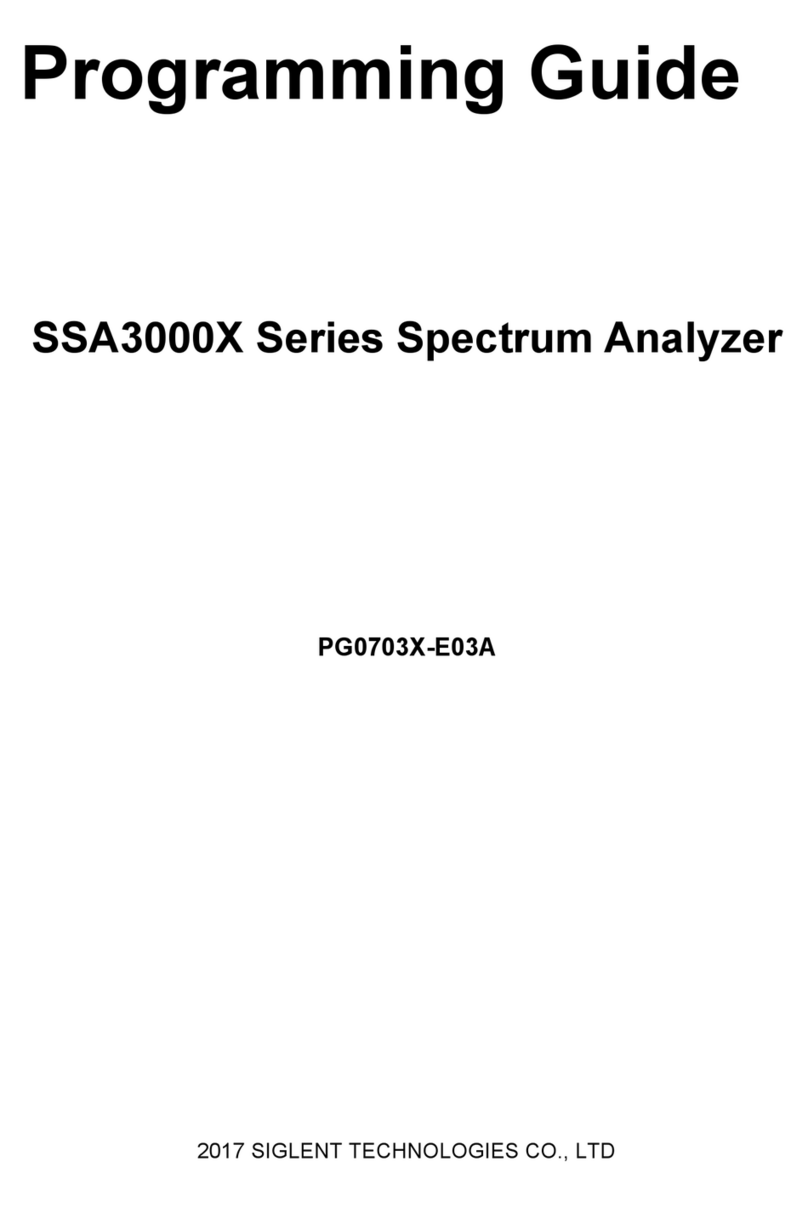
SIGLENT TECHNOLOGIES
SIGLENT TECHNOLOGIES SSA3000X Series Programming guide

Rotronic
Rotronic Pt 100 RTD CALIBRATION PROCEDURE

ZIEHL
ZIEHL TR660IP operating manual
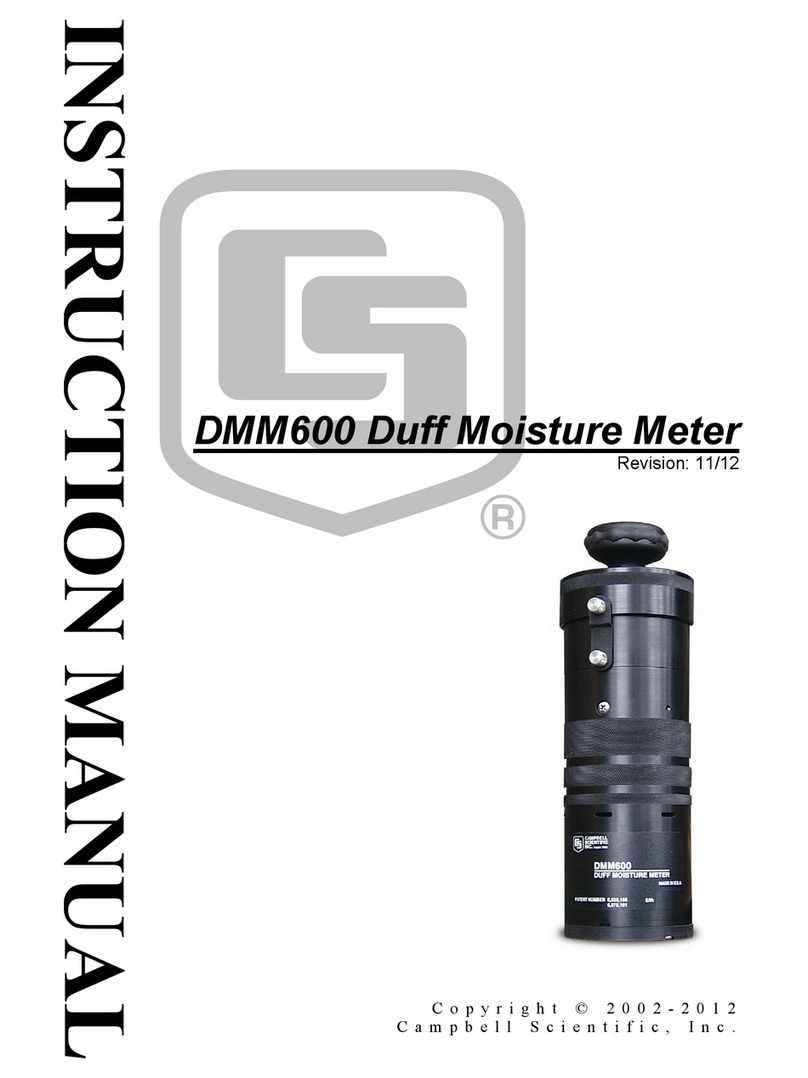
Campbell
Campbell DMM600 instruction manual

Sekonic
Sekonic LITEMASTER PRO Service manual
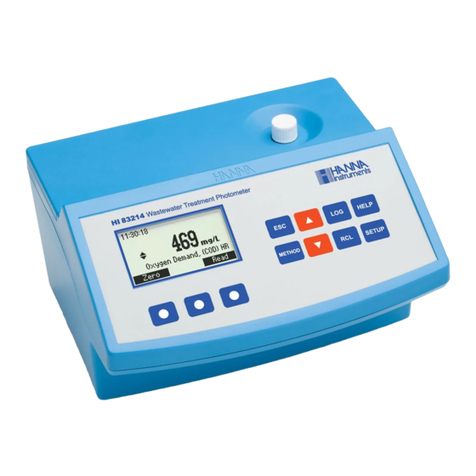
Hanna Instruments
Hanna Instruments HI 83214 instruction manual

